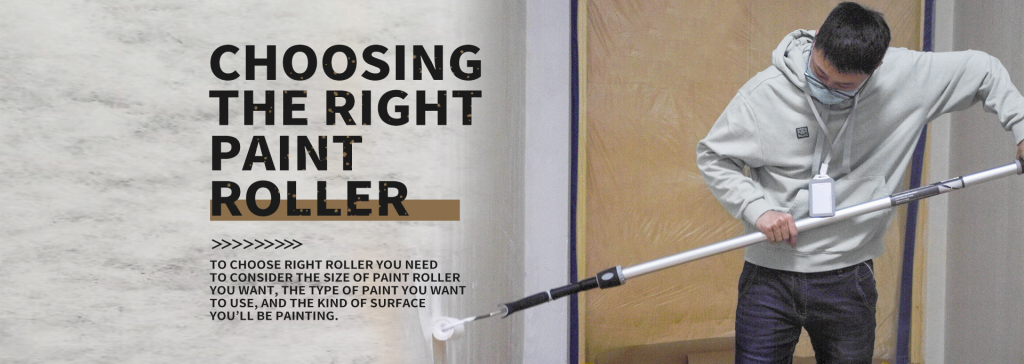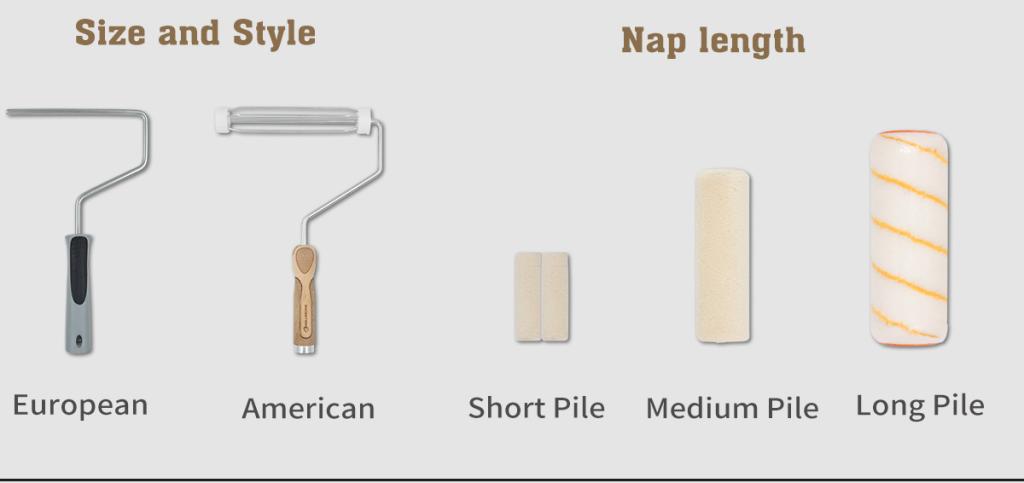
PAINT ROLLER COVER CONSIDERATIONS
Material: to match paint
Nap/ Pile height: to match surface
Style: to match roller frame ( American or European style)

ROLLER COVER MATERIAL
Synthetics: Most widely used category of paint roller fabrics. Made with a single fiber type or blend of fibers. Common materials are polyester, nylon, rayon, and acrylic. In general they can be used with water or oil based coatings but work best with water based.
Shearing: Wool that is still attached to it tanned skin, also called lambskin or sheepskin. It is the original paint roller fabric, naturally shed resistant with exceptional capacity and release. Best for oil based paint but also some of the most expensive roller fabric. Prolonged soaking can cause the cover to deteriorate. Ideal for use with semi-gloss and gloss sheens because they give you the smoothest finish. The only drawback to them is that they don’t hold nearly as much paint as their knit counterparts. So expect to be dipping into your roller pan often.
Mohair: Silky, Angora goat hair, always woven together with synthetic fibers. Creates a smooth, glass-like finish and resists matting. Expensive, but provides superior results on smooth surfaces.
50/50: High performance blend of lambs wool and polyester fibers. The wool provides maximum capacity and a smooth finish while the polyester helps the cover to resist matting.
Knit Covers:These covers work great when you’re applying flat and satin/egg-shell finishes. Knit covers are available in both wool and polyester fabrics, however, the pure wool and 50/50 wool-polyester blend covers will hold more paint and shed less.
Woven covers usually require more time and effort to roll vs. non-woven varieties because woven covers typically use with much shorter naps vs. non-woven roller covers.
NAP LENGTH/ PILE HEIGHT
1/4″ (6mm)- for smooth surfaces like wood doors, cabinets, ceilings, and trim. Best for high sheen paints.
3/8″ (9mm)- For smooth to semi smooth surfaces like drywall, ceilings and most interior walls.
1/2″ (12mm)- For semi smooth to semi rough surfaces like painted brick or moderately textured walls.
3/4″ (19mm)- For rough surfaces such as bare brick or concrete, and heavily textured walls. Best with Matte or Flat paints.

SIZE AND STYLE
Size Width of roller is very important to best fit your job : 2” to 18” 5-46cm
American and European Rollers have different style frame with different inner diameter sizes
American style Rollers have a 1 ½ inch inner diameter to fit over the cage style frame and European style rollers have a 6mm or 8mm single wire frame that fits inside the roller cover. It is important to know which style frame you are using for purchasing future roller covers.

